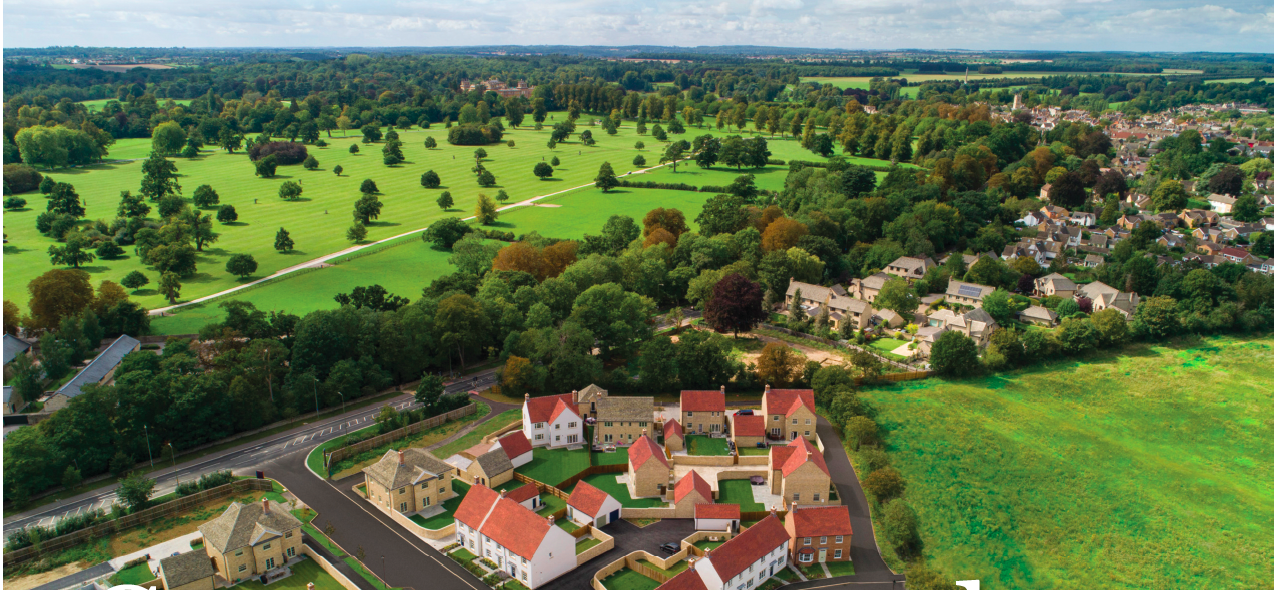
Ian Barnett, national land director, Leaders Romans Group looks at the Government and opposition’s ambivalent views on the Green Belt when it comes to development. When Keir Starmer proposed that the Green Belt should be built on and, not only that, but that house prices would fall as a result, some were quick to determine that ‘political suicide’ had been committed. But others saw as a much-needed breath of fresh air in an otherwise very stagnant debate about planning and housing delivery.
When Keir Starmer proposed that the Green Belt should be built on and, not only that, but that house prices would fall as a result, some were quick to determine that ‘political suicide’ had been committed. But others saw as a much-needed breath of fresh air in an otherwise very stagnant debate about planning and housing delivery.
To engage in a sensible discussion on the Green Belt, the context must be fully understood. We must move away from images of ‘concreting all over the Green Belt’ and look again at what the Green Belt actually is. As Starmer quite accurately pointed out, much of it isn’t even green: contrary to a widely-held belief that the Green Belt is a bucolic ring of verdant countryside open to all, much of it is inaccessible and/or preserves and protects unattractive edge-of-settlement brownfield sites – those which have potential for sustainable development.
As for ‘concrete’, the idea that housing developments are primarily ‘grey’ may have been the case almost 70 years ago when the Green Belt was introduced, but is not true today. As a result of changes in approaches to development today, new communities have the potential to be attractive, primarily ‘green’ spaces which significantly boost both the aesthetic and biodiverse qualities of the land.
 Starmer’s speech was going so well until he mentioned giving local people ‘the power to decide where new homes are built’. In principle, well considered input to help create new communities which respond sensitively to local objectives is helpful. But strategic planning is extremely complex and as we have seen recently, can be derailed, to the detriment of many, when dominated by subjective, unrepresentative and negative sentiment from local residents.
Starmer’s speech was going so well until he mentioned giving local people ‘the power to decide where new homes are built’. In principle, well considered input to help create new communities which respond sensitively to local objectives is helpful. But strategic planning is extremely complex and as we have seen recently, can be derailed, to the detriment of many, when dominated by subjective, unrepresentative and negative sentiment from local residents.
If Starmer is to make the bold move of substantially increasing housing delivery, he must appreciate that the planning framework is by far the best system through which to deliver new homes. The UK has more tiers of Government than most. Each should be given powers appropriate to its size and position in the administrative hierarchy. On this basis, we would see some form of macro-spatial plan, led by national Government, a system of regional planning such as that which the last Labour Government introduced, and a limited but still useful role for neighbourhood forums.
Neighbourhood Planning has a role to play in advising on details such as materials choices and the provision of local amenities, but should not override or conflict with Government policy. The current Government’s Design Codes and other aspects of localism may have been well intentioned (if only in allowing local residents a greater sense of involvement) but the flipside is that they introduce a complex layer of bureaucracy and all too frequently clash with planning policy, resulting in delays and stagnation.
 It is important to note that a review of the Green Belt does not necessary mean a reduction in the Green Belt. To gain political and public support, the Green Belt needs to be reframed on the basis of expansion. Since 1955 when the Green Belt was introduced, the UK population has grown from 51,063,902 to 68,497,907.
It is important to note that a review of the Green Belt does not necessary mean a reduction in the Green Belt. To gain political and public support, the Green Belt needs to be reframed on the basis of expansion. Since 1955 when the Green Belt was introduced, the UK population has grown from 51,063,902 to 68,497,907.
The housing crisis demonstrates a desperate need for sustainable new settlements. But the good news is that it is possible to both deliver more homes and also expand the Green Belt, simply through an up-to-date review.
Want to know more?
For more information on the Leaders Romans Group, go to www.rdr.link/dap002

